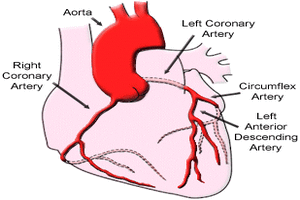- Home
- Editorial
- News
- Practice Guidelines
- Anesthesiology Guidelines
- Cancer Guidelines
- Cardiac Sciences Guidelines
- Critical Care Guidelines
- Dentistry Guidelines
- Dermatology Guidelines
- Diabetes and Endo Guidelines
- Diagnostics Guidelines
- ENT Guidelines
- Featured Practice Guidelines
- Gastroenterology Guidelines
- Geriatrics Guidelines
- Medicine Guidelines
- Nephrology Guidelines
- Neurosciences Guidelines
- Obs and Gynae Guidelines
- Ophthalmology Guidelines
- Orthopaedics Guidelines
- Paediatrics Guidelines
- Psychiatry Guidelines
- Pulmonology Guidelines
- Radiology Guidelines
- Surgery Guidelines
- Urology Guidelines
Add coronary artery calcium (CAC) to PCE risk assessment for CVD for elderly people

As per the new guideline, every individual in more than 7.5% 10yrs risk of atherosclerotic cardiovascular disease (ASCVD) is recommended regular statin for primary prevention of the disease.
It is noted that every healthy individual in his lifetime will achieve this score just based on his age-related risk despite the fact he may not be having atherosclerosis.
Mortensen and colleagues sought to evaluate a more personalized approach to primary prevention with statins by adding a simple disease-specific reclassification step to the formal Pooled Cohort Equation (PCE) risk assessment.
Their idea was to improve risk classification by down-classifying those with ≥7.5% 10-year risk but no coronary artery calcium (CAC) or carotid plaque burden (cPB), and improving sensitivity by up-classifying those with “intermediate” ASCVD risk 5% to <7.5%, but CAC ≥100 or cPB is ≥300 mm2 (deemed equivalent to CAC ≥100).
The reclassification was tested in the contemporary, multiethnic BioImage cohort, a prospective observational cohort of men 55 to 80 years of age and women 60 to 80 without known ASCVD at baseline. This analysis was done in 5,805 of 6,102 BioImage participants. Mean age at baseline was 69 years and 86% qualified for statin therapy according to the ACC/AHA PCEs, with a sensitivity of 96%, but a specificity of only 15%. The ten-year ASCVD risk was ≥15% in 55% of participants.
After a median of 2.7 years, 91 patients had coronary heart disease and 138 had experienced a cardiovascular disease event. CAC or cPB scores of 0 were common (32% and 23%, respectively) and were associated with low event rates. Among those with ≥7.5% 10-year ASCVD risk, 28% had no CAC and 20% had no carotid plaque.
The investigators concluded that their disease-guided approach to risk stratification that uses measures of subclinical atherosclerosis like coronary artery calcium (CAC) or carotid plaque burden (cPB) in addition to the AHA/ACC’s PCEs “could spare a significant proportion of elderly people from taking a pill that would benefit only a few.”
References
1 Mortensen MB, Fuster V, Muntendam P, Mehran R, Baber U, Sartori S, Falk E.: A simple disease-guided approach to personalize ACC/AHA-recommended statin allocation in elderly people. The BioImage study. J Am Coll Cardiol. 2016; 68: 881-91.
2 Naqvi TZ, Nambi V.: Risk statins or risk “zero” on atherosclerosis imaging for risk stratification? J Am Coll Cardiol. 2016; 68: 892-4.

Disclaimer: This site is primarily intended for healthcare professionals. Any content/information on this website does not replace the advice of medical and/or health professionals and should not be construed as medical/diagnostic advice/endorsement or prescription. Use of this site is subject to our terms of use, privacy policy, advertisement policy. © 2020 Minerva Medical Treatment Pvt Ltd